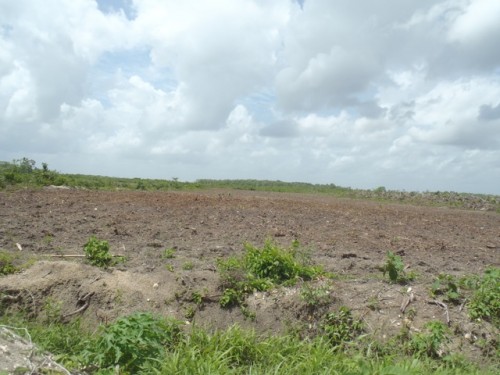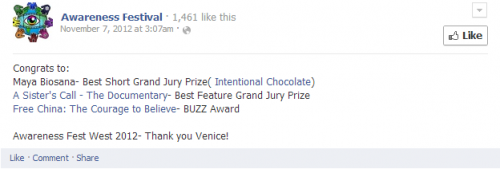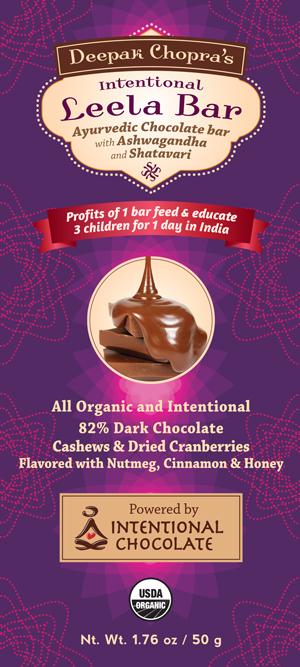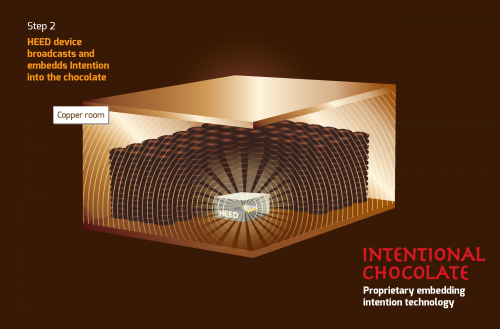Intentional Deception
This post is the result of research conducted over several months in collaboration with chocolate maker Steve DeVries, who has for a number of years now followed the events described below, and whose insights were invaluable to the writing process.
What if I were to tell you that a person could carefully meditate over food, mentally impressing it with an intention at will? People who consumed the food would directly benefit (or suffer) based on that embedded intention. In other words, if you accept this, then you must accept that food blessed with intention can have measurable effects on one’s well being, beyond the psychosomatic. What if I were then to tell you that there exists an electrical device into which one can embed intention through guided silent meditation? Special memory chips in this device capture and store the physical correlates of one’s meditated intention, programming it for later use. Once readied, the electrical device “is placed inside a shielded room for five days,” where it broadcasts the recorded intention, literally embedding it into several hundred pounds of chocolate. Would you believe me if I told you that scientific studies have shown that eating chocolate embedded with the additional ingredient of intention increases overall well being by 67%?
People are selling chocolate based on these claims. And people are buying it.1
What follows is a summary of a decades-long project to sell chocolate based on a litany of unsubstantiated claims and false promises.
Jim Walsh and Hawaiian Vintage Chocolate
In the late 1980s, James “Jim” Walsh, a former marketing executive from Chicago, began working with the Hershey Foods Corporation and Amfac Hawaii, a land development company, to revive cacao growing in Hawaii.2 While cacao cultivation had met with some initial excitement in the mid-1800s when the plant was first brought to Hawaii, interest in the early 1900s was complicated by the two World Wars. Walsh’s Kakela Enterprises and his partners were successful in a small-scale reincarnation of cacao growing on the islands, and reportedly had other plans to continue this expansion and possibly even open a factory that would double as a tourist center.3
However, the cacao growing project did not materialize as planned, and Walsh was sued first by Hershey (Hershey won), and then in a series of additional lawsuits throughout the 1990s, making him a habitual defendant. Here is a list of seven additional lawsuits naming Walsh as a defendant that I was able to quickly gather via the Hawaii State Judiciary website4:
1CC90-0-003132 HERSHEY FOODS CORP VS KAKELA ENTERPRISES INC ETAL
1CC90-0-002779 GECC FINANCIAL CORP VS HAWAII COCOA ETAL
1CC91-0-000927 BANK OF HAWAII VS HAWAII COCOA JT VENT ETAL
1CC91-0-000742 WARD COURT DEV CO VS HAW COCOA JT VENTURE ETAL
1CC91-0-002737 FIRST INTERSTATE BANK VS HAWAII COCOA JT VENT ETAL
1CC90-0-003984 FIRST INTER BK OF HI VS HI COCOA JT VENTURE ETAL
1CC91-0-000819 DOBOVAN PRODUCTIONS INC VS HAW COCOA JT VENT ETAL
This list is not meant to be exhaustive; it is possible that there are more lawsuits yet to be uncovered.
Undeterred by the failure with Hershey, Walsh founded a new company, Hawaiian Vintage Chocolate (HVC), with the goal of producing chocolate made from Hawaiian cacao. In 1994, the company released its first chocolate, made partially with cacao from the Big Island, though by 1997 it began wholly substituting foreign cacao in its products due to significant crop failures. After four years, HVC was investigated by the State of Hawaii Department of Agriculture for falsely claiming that it used chocolate made from Hawaiian cacao and ordered to stop making such claims.5 Today, HVC cacao origins are explained as follows6:
As agricultural conditions vary from year to year and season to season, each year’s product will contain a different percentage of cocoa beans from Hawaiian Vintage Chocolate’s proprietary cacao genetics developed in Hawaii and now grown worldwide. Our commitment to you is that the quality of Hawaiian Vintage Chocolate products will remain unchanged. The HVC chocolate making process coupled with meticulous craftsmanship produces what many consider to be the world’s finest tasting chocolate.
According to its website, HVC is now a “public development company (OTC:HWVI) creating products, brands, and marketing opportunities, utilizing its unique assets. The company is a leading developer and innovator of gourmet varietal and functional chocolate.”7 However, some of the most basic facts about HVC, currently trading in the Pink Sheets for $.0061 per share, remain unclear and unsubstantiated. Others are completely false.
For example, the HVC website boasts:
“Which chocolate did Bill Gates, the man who can have it all, insist upon serving at his wedding? Which brand did the Dalai Lama choose for his very first taste of chocolate? … The answer is what the New York Times calls ‘…the best in the world….’ HAWAIIAN VINTAGE CHOCOLATE.”
When put to the test, these claims do not hold. No evidence beyond a number of websites linked to Jim Walsh business ventures and journalistic articles citing these websites exists to prove that HVC was served at Bill Gates’ wedding. Similarly, the claim that the Dalai Lama chose HVC for his first taste of chocolate is unsubstantiated. An educated guess would lead many to believe that this is false; His Holiness is a long-time known chocolate lover, and media routinely reports his ordering of chocolate at restaurants and being presented with gifts of chocolate at events.8 The quote from the New York Times is also a bold misrepresentation. The author of the article in question refers to Hawaiian cacao and chocolate and states the following: “They say the chocolate, the first ever grown commercially in the United States, can hold its own with the best in the world.” Later, a chef is quoted as saying: “[Hawaiian chocolate is] like the chocolate you get from Venezuela and Costa Rica, which is the best in the world.” Nowhere does the article refer to Hawaiian Vintage Chocolate as the best in the world.9
These are just the tip of the iceberg when it comes to the deceptive and problematic claims made by Walsh about Hawaiian Vintage Chocolate.
Intentional Chocolate
In 2007, Walsh began a new venture, launching a “revolutionary varietal chocolate” (note: that means nothing) under the name Intentional Chocolate, based on a preliminary account of the claims described at the beginning of this article. According to the Intentional Chocolate website10:
[Intentional Chocolate] is scientifically proven to invigorate and heighten a person’s sense of well-being. It is the truest expression of our goals for living intentionally, doing no harm, and benefitting others. At Intentional Chocolate we are trying to change the way people understand food by introducing them to Organic Chocolates embedded with intention and energy. We took the world’s finest chocolate, Hawaiian Vintage Chocolate, added concentrated positive intention, and created Intentional Chocolate™, an edible, sensual experience of well-being.
Like with HVC, there are a number of doubts to these claims. Intentional Chocolate suggests the use of HVC as the base for its product, vaguely hinting that the cacao comes from Hawaii without stating it outright. There are also over a dozen claims to celebrity endorsement on the site which merit further investigation given HVC’s accuracy failures.11 That said, a number of major publications have covered the company’s work, including Oprah.com.12
The chief claim about Intentional Chocolate’s value is based on “the science of infusing intention” into chocolate, which in itself is based on research documented in a sole article entitled “Effects of Intentionally Enhanced Chocolate On Mood” and co-authored by Jim Walsh. The conclusion of the study is: “The mood-elevating properties of chocolate can be enhanced with intention.”
This research is deeply problematic on many levels (several problems with the design of the study and inconclusive claims made in the article have already been detailed).13 Scientifically or statistically literate individuals looking for a good laugh can check out the full PDF of the absurd article.14 Perhaps most perplexing in the article is the repeated mention of the use of an electrical device designed “based on the concept of an intention-imprinted electrical device,” of which no further description or specification is provided. The reader is simply required to “take their word for it” that such a device exists and has been proven to work. The article was published in an obscure peer-reviewed journal, Explore: The Journal of Science and Healing, and has, according to Google Scholar and Web of Knowledge, only been cited a few times.
Walsh expresses his beliefs about Intentional Chocolate in this video, demonstrating that they are based in an Orientalist (mis)understanding of meditation and intention in Tibetan Buddhism:
(Note: the claim that cacao has the highest antioxidant count of any plant is false.)
More details on the beliefs behind Intentional Chocolate emerge from this interview with Walsh’s daughters, both involved in the family business.15
And this bizarre YouTube video, starring Walsh’s daughter Ashley, gives a sense of the new age belief in the mystical unknown required to benefit from Intentional Chocolate.
Maya Biosana
In 2009, Jim Walsh embarked on another chocolate business venture, this time in Quintana Roo, Mexico in partnership with Mexican politician Fernando Manzanilla.16 Little information exists about this project, called Maya Biosana, beyond a sprinkling of articles from the Mexican news media. According to an Intentional Chocolate blog post written by Ashley D. Walsh, introducing the project and a short film she directed about it, entitled: “Maya Biosana – The Rebirth of Mexican Cacao, A short documentary”17:
In 2009 Jim Walsh and Fernando Manzanilla had a vision to create the world’s largest Intentional organic cocoa fields working with social entrepreneurship in the Mayan community in Mexico. I was lucky enough to helm the filming of this project over 2 years as the place was transformed from rural Mexico, home of a dwindling Mayan town into a now blossoming entrepreneurial city growing cacao fields and supporting their local community.
This film follows Maya Biosana, as it repositions Mexico as the largest organic cocoa producer in the world and bringing the sacred plant back to it’s birth home. Improving the quality of life in Mexico with it’s vision of collaboration, co-creation and intention by providing the local and surrounding communities with a new model of business utilizing their own proprietary Well Being index as the marker of change.
Since this video was filmed the town has expanded and grown two-fold.
The film won the best short Award in 2012 at the Awareness Festival,http://www.awarenessfestival.org/
Watch Walsh’s 13 minute film here:
The film suggests that the Maya Biosana partners set out to collaborate with Mayan communities in the Yucatan to combine large scale cacao planting and social entrepreneurship. Jim Walsh, and to a lesser extent Manzanilla, are portrayed as heroes arriving to remind the beleaguered Maya of the richness of their culture and provide them with direction to a new kind of business. Images of a Maya shaman blessing and praying over the land are interspersed with interviews with Walsh and Manzanilla in which they share their non-specific vision for the project and express gratitude for the lessons the Maya have taught them about community. The extensive footage of mature cacao trees in the film is misleading at best as it does not depict the region in question; only the greenhouse cacao tree seedlings shown in the film were actually being grown on land linked to Maya Biosana.
To date, four years after its supposed founding, none of the cacao farming plans that Walsh and Manzanilla made have come to fruition. The site Geo-Mexico has posted two well-researched articles on the Maya Biosana project, evaluating the claims and available evidence surrounding this project.18,19 In sum, the project appears to have been dead in the water since at least December 2012. The Mexican government requested the return of 15 million pesos (about 1.14 million US dollars) when the promised cacao farms failed to materialize.
These two photographs were taken by Steve DeVries on June 21, 2013, on the ground where the film claims healthy cacao trees are growing.
This has not, however, stopped Ashley D. Walsh from continuing to promote herself as director of the Maya Biosana documentary. As recently as July 2013, she tweeted the following20,21:
In a Twitter exchange where I requested more information, she referred me to the Maya Biosana website, which had no content then and continues without content, as well as the Leela Bar website, which has nothing to do with the project (explained in detail below).22
The only evidence of the film’s having won an award, as claimed in her tweets, is from this Facebook post.23
It is irresponsible and dishonest for this film to be used for the purposes of self-promotion without any mention of the project’s dissolution and the failed promises to the affected communities in Mexico.
The HESA Institute
In 2009 or 2010, Walsh founded The HESA (Human Energy Systems Alliance) Institute. The Institute’s website explains24:
The HESA Institute, through its revolutionary alliance of leading scientific institutions and researchers, is engaged in the discovery and development of pathways, techniques and disciplines that harness consciousness. Our mission is to use the results of our research to create innovative products that transform human health, energy, nutrition and longevity.
By advancing its research initiatives, the HESA Institute is dedicated to exploring scientifically the proposition that: Consciousness is a fundamental force or mechanism that can, among other things, control or cause change in the human energy field, as well as, potentially, the universal field.
Like the other Walsh ventures, The HESA Institute website is brimming with problematic, unsubstantiated claims about its collaborators and research. First, there is no proof that any of the described potential research initiatives are ongoing. In fact, the publications to which the site links are not actually associated with the site, but rather are PDFs of peer-reviewed articles published in medical and scientific journals that contain no mention of HESA (e.g. this multi-author article, “Light-activation of the Archaerhodopsin H+-pump reverses age-dependent loss of vertebrate regeneration: sparking system-level controls in vivo” published in Biology Open).25
Next, when introducing the Institute’s collaborators, the language used is: “Principal Alliance Members have included over the years,” followed by a long list of names. The phrasing is such that it is possible these members are not currently aligned with HESA in any meaningful way. While my research is not conclusive, I have yet to uncover evidence of these individuals officially listing HESA as an affiliation of theirs on their own websites or professional biographies. For example, Professor Michael Levin, one of the authors in the above-mentioned article and Principal Investigator at the Levin Lab at Tufts University, includes no mention of an affiliation with The HESA Institute anywhere on his official professional website or in his biosketch.26
Jim Walsh’s biography on the HESA site is also riddled with inaccuracies. He claims to serve on the advisory boards for the Center for Creating Healthy Minds at the University of Wisconsin-Madison and the Institute for Advanced Studies in Spirituality and Wellness at the Chicago Theological Seminary. The latter claim is unsubstantiated and no supporting evidence can be found. The former is false; the University of Wisconsin-Madison Center is actually called the Center for Investigating Healthy Minds, and does not list Walsh as an Advisory Board Member.27 Moreover, this NYPost article includes a quote from the Center’s Founder, Dr. Richard J. Davidson, stating that he was promised funds by Walsh that never materialized,28 in reference to another promoted but failed venture.29
This promotional video for HESA includes numerous obviously absurd claims, as well as a number of questionable suggestions of association with universities, companies, and organizations.
For example, the logos for University of Wisconsin-Madison, Harvard University, Bial (a Portuguese pharmaceutical company), and Imagina México (an organization devoted to studying well being in Mexico) are displayed in the video, hinting at some link with The HESA Institute, while no such affiliations are substantiated.
Despite these many issues, Walsh continues to list his work at The HESA Institute as primary in his title in recent documents (see The Consciousness Project, below).
Deepak Chopra, The Consciousness Project, and the Leela Bar
In July of 2013, celebrity New Age health guru Deepak Chopra announced a partnership with Jim Walsh called The Consciousness Project. In a blog post entitled “Cracking the Cosmic Code,” they stated the following:
As founders and backers, we are announcing a major initiative to solve the epic problems that the world faces. Leading the way is global warming, with its eventual threat of mass extinction if worse comes to worst. But climate change is linked to globalization, economic upheaval, overpopulation, and hostile tensions in the world’s hot spots. The link, we believe, is consciousness, and the only way to solve our epic problems is to arrive at an understanding of consciousness that will benefit humanity.
To address the issue of consciousness, the statement goes on, they will plan to invest $1 billion over the course of five years, focusing on “three primary areas of development – well-being, communications, and intentional technology.”30
Shortly thereafter came the release of The Leela Bar, marketed as “Deepak Chopra’s Intentional Ayurvedic chocolate bar.“ Like many of the “feel good” chocolate bars on the market, the product includes a dizzying array of promises: it is powered by Intentional Chocolate, Ayurvedic with Ashwagandha and Shatavari, USDA label organic, the profits of one bar feed and educate three children for one day in India, and it contains 82% dark chocolate, cashews, dried cranberries, nutmeg, cinnamon, honey, and vanilla.
The Leela Bar website claims the following, based on the same principles as Intentional Chocolate, still wholly unsubstantiated by any evidence of either the existence of such a device or its efficacy31:
Intention is embedded into the chocolate through an embedding device called HEED™ (Human Energy Embedding Device™). Deepak and Rita used a guided silent meditation (no vocal tones) while focusing the intention on the electronic HEED™ circuit, which is designed to capture physical correlates of Intention in special memory chips. Once programmed with Intention, the device is placed inside a shielded room for five days along with several hundred pounds of chocolate. It is then set to broadcast the informational patterns associated with the recorded intentions. The combination of a well shielded environment and exposure to the stored intentional patterns embeds the chocolate.
The underlying principles that govern this process are currently being modeled in the realm of basic science, primarily based on the concept of a participatory universe suggested by Princeton physicist John Wheeler, in which matter and energy are emergent properties of quantum information.
These images from the site illustrate the process to hilarious effect.
You can also listen to Deepak Chopra’s spoken explanation of the embedded intention on the website.32
As one might have come to suspect after reading all of the evidence above, this venture has not been without its troubles. The New York Post recently published two articles: “Deepak Chopra sues ex-partner over $5M donation”33 and “Deepak Chopra’s former partner has history of business failures.”34 The articles detail a developing legal situation between Deepak Chopra and his now-former partner, Jim Walsh, following a dispute over funds earmarked for Chopra’s foundation to which Walsh has laid claim. In short, Chopra is publicly suing Walsh, distancing himself from the dissolved partnership in the process.
Add intentional deception to the long list of failed Walsh ventures.
Trevor Bass, Romi Burks, and Scott of DallasFoodOrg provided generous guidance at various stages of the research and editing process, for which I am grateful. All errors are my own.
The following public Diigo group list contains links and cached versions of the dozens of websites and PDFs that have informed this research: https://groups.diigo.com/group/chocolate-con
Steve DeVries and I will continue to update this list as the situation develops. In the meantime, please contact me at any time to share additional information or with questions, comments, or concerns.
Update November 5, 2013, 4:30pm. Two photos taken by Steve DeVries on June 21, 2013, were added to the post in the Maya Biosana section.
- http://leelabar.com/intention/ [↩]
- http://digitalcollections.library.cmu.edu/awweb/awarchive?type=file&item=620740 [↩]
- http://www.csmonitor.com/1989/0307/fchoc.html/(page)/2 [↩]
- http://hoohiki1.courts.state.hi.us/jud/Hoohiki/main.htm?spawn=1 [↩]
- 1. http://the.honoluluadvertiser.com/article/2010/Jan/25/bz/hawaii1250312.html, 2.
http://the.honoluluadvertiser.com/article/2003/Jun/29/bz/bz01a.html [↩] - http://www.hawaiianchocolate.com/growing_chocolate.html [↩]
- http://www.hawaiianchocolate.com/news_info.html [↩]
- e.g. http://www.chow.com/food-news/2820/the-dalai-lama-loves-him-some-veal/ [↩]
- http://www.nytimes.com/1994/05/11/garden/aloha-to-a-new-chocolate.html?pagewanted=all&src=pm [↩]
- http://www.intentionalchocolate.com/company.php [↩]
- http://www.intentionalchocolate.com/company_profile.php [↩]
- http://www.oprah.com/spirit/Spiritual-Chocolate-Chocolate-and-Mood [↩]
- http://www.metabunk.org/threads/debunked-effects-of-intentionally-enhanced-chocolate-on-mood.175/ [↩]
- http://media.noetic.org/uploads/files/Effects_of_choc.pdf [pdf] [↩]
- http://lifeandthyme.com/interview/intentional-chocolate/ [↩]
- http://www.linkedin.com/in/fernandomanzanilla [↩]
- http://intentionalchocolate-blog.com/2013/07/17/maya-biosana-the-rebirth-of-mexican-cacao-a-short-documentary/ [↩]
- http://geo-mexico.com/?p=6523 [↩]
- http://geo-mexico.com/?p=9752 [↩]
- https://twitter.com/AshleyDWalsh/status/357609474715947010 [↩]
- https://twitter.com/AshleyDWalsh/status/358268344786370561 [↩]
- https://twitter.com/carladmartin/status/368481081101529089 [↩]
- https://www.facebook.com/permalink.php?id=178528135052&story_fbid=10151219078340053 [↩]
- http://www.hesainstitute.com/ [↩]
- http://www.hesainstitute.com/wp-content/uploads/2013/03/dany-and-kellys-optogenetic-tail-paper.pdf [pdf] [↩]
- http://ase.tufts.edu/biology/labs/levin/people/ [↩]
- http://www.investigatinghealthyminds.org/cihmPeople_Board.html [↩]
- http://nypost.com/2013/10/25/deepak-chopras-former-partner-has-history-of-business-failures/ [↩]
- http://www.businesswire.com/news/home/20101116006657/en [↩]
- https://www.deepakchopra.com/blog/view/1212/the_consciousness_project__hopeful_solutions_for_epic_problems_ [↩]
- http://leelabar.com/intention/ [↩]
- http://leelabar.com/the-meditation/ [↩]
- http://nypost.com/2013/10/23/deepak-chopra-sues-ex-partner-over-5m-donation/ [↩]
- http://nypost.com/2013/10/25/deepak-chopras-former-partner-has-history-of-business-failures/ [↩]
comments
Leave a Reply










